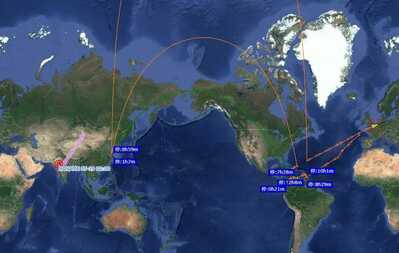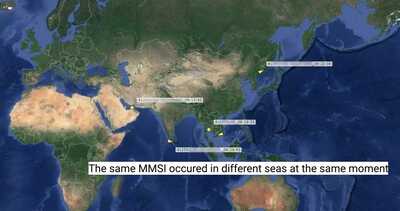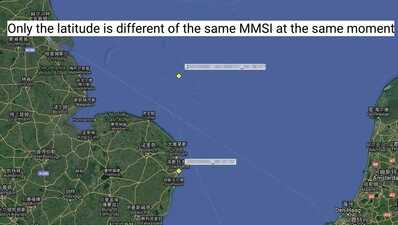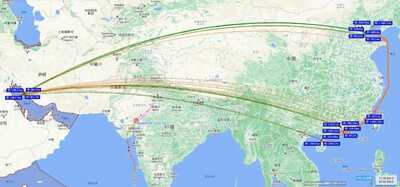My ship was sailing in Malacca, why was its AIS shown in West Africa? ...
My ship was sailing in home country, why was its AIS shown to be Iran? ...
Why was the vessel AIS out of position? ...
Questions described above have troubled some users for a long time.
HiFleet has successfully developed the algorithm to identify and remove the flying AIS positions, and the algorithm to identify and remove the clone AIS reports.
What is flying AIS position?
Flying AIS position means there are two or more distant AIS positions at same time for a specific vessel.
For example, on 12th May the vessel is sailing in Atlantic, but next second it jumped to somewhere thousands of miles away.
Why did flying AIS data happen?
1. Clone vessels
Based on hiFleet data, flying AIS positions are caused by clone vessels, which takes up about 20% of the whole amount (about 600 vessels) according to our statistics. And among these clone vessels, the former three number of MMSI which is 412 and 413 get the highest ratio. This kind of flying AIS data is generally maintained for a long time, irregular, and has certain regional characteristics and is difficult to recover and deal with.
2. AIS equipment error
Based on hiFleet analysis, two kinds of flying AIS positions are special: Firstly, one of the longitude or latitude is the same as the vessel real AIS position, while the other get obvious and long distance migration. Another is the vessel coordinate suddenly turn to 0, it 's likely that the equipment is restored to the factory setting. These two situations above is temporary, occasional and recoverable.
What's the problem caused by flying AIS positions?
1.Impact on navigation safety
AIS signal is an important navigation aid and water supervision information basis in use at present. The emergence of abnormal signals will have a direct impact on the navigation of ships in the waters and decision-making of regulators. It will bring more safety risks.
There has been a case that a ship owner bought an outer ship, because its MMSI was suspected to be cloned, the historical route was abnormal and in a mess. The authority refused the vessel to enter the river.
2.Impact on ship operations
In the process of ship operation, charterers, insurance, finance and government agencies will check the historical route, voyage and port of calls etc. through historical AIS data. With the flying AIS data, it will bring some wrong messages that which bring challenges to daily operation, and also bring unnecessary troubles to ship owners.
Here is a real case of a ship owner whose ship has always sailed domestically and never visited the Iranian port. In the actual process of insurance, the insurance company found that the ship had been to the Persian Gulf by checking the track, finally the owner spent lots of efforts to prove innocent.
How to avoid the influence of flying AIS data and clone vessels?
1. Standardize the AIS information Settings
The relevant information in AIS equipment shall be set accurately in accordance with the terms and conditions of the authority.
2. Professional data processing based on big data
HiFleet had developed an algorithm for automatic identification and intervention based on global AIS data. It has already protected AIS for our paid users on hiFleet, and automatically eliminated 90% of the impact of flying AIS positions, and the other 10% extreme special cases that can not be handled automatically by the system will be assigned to our data specialist (If you have found the flying AIS not be modified, just contact us support@hifleet.com).
Click the link to track vessel position www.hifleet.com
APP download
Contact us: support@hifleet.com







